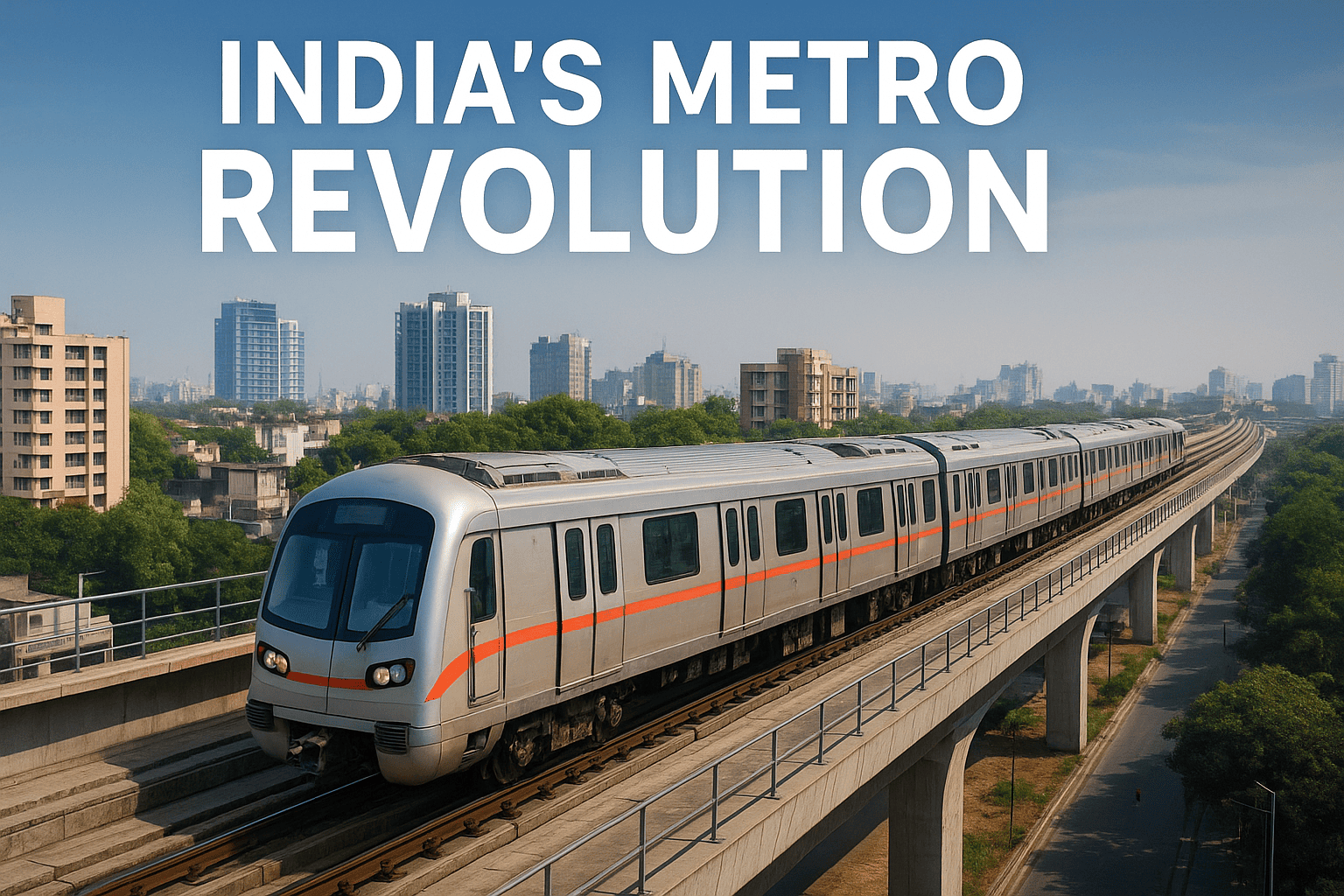India Metro Revolution is reshaping the way cities move, live, and grow. From modest beginnings in Delhi to a massive network covering 23 cities, metros have emerged as the lifeline of modern urban India. Prime Minister Narendra Modi calls it “a new lifeline for the cities”, and the numbers back it up — the transformation has been nothing short of historic.
A Decade of Unprecedented Growth
In 2014, India’s metro network measured just 248 km. By 2025, India Metro Revolution has expanded this to 1,013 km, making India the world’s third-largest metro network. This growth has been powered by ₹2.5 lakh crore (US$ 28.86 billion) in investments, with over 2,000 metro coaches built domestically.
Daily ridership has surged from 28 lakh to over 1.12 crore, proving that metro systems are no longer optional — they’re essential.
Government’s Vision and Policy Push
The “Metro Rail Policy 2017″ became a cornerstone of India Metro Revolution, ensuring projects are sustainable, economically viable, and integrated with other modes of transport. The policy mandates Comprehensive Mobility Plans, private sector participation through PPP models, and a minimum 14% Economic Internal Rate of Return for central support.
Make in India: Building Locally, Growing Globally
Under Make in India, at least 75% of metro cars and 25% of key equipment must be domestically produced. This push has empowered companies like BEML to deliver over 2,000 metro coaches to cities including Delhi, Bengaluru, and Kolkata. It’s a proud moment for India Metro Revolution, which is not only expanding transport but also driving industrial growth.
Green and Sustainable Urban Mobility
From solar-powered stations in Delhi to regenerative braking systems in Kochi and Nagpur, sustainability is at the core of India’s Metro Revolution. Many metro stations have received IGBC certifications, proving that urban growth and environmental care can go hand in hand.
Technological Breakthroughs
India is embracing cutting-edge solutions:
- “Namo Bharat” high-speed trains at 160 km/h.
- “The Kolkata Underwater Metro” — a first for India.
- “Kochi Water Metro”, linking islands with electric-hybrid boats.
- ETCS Level II Signaling for faster, safer travel.
- Driverless operations and QR-based ticketing for a seamless commute.
These innovations put India’s Metro Revolution on the global map.
Global and Domestic Partnerships
Projects like Mumbai Metro Line 3 highlight how international collaborations, such as funding from Japan International Cooperation Agency (JICA), are accelerating progress. The blend of foreign expertise and local execution ensures that India Metro Revolution remains future-ready.
The Road Ahead
Upcoming projects in Pune, Ahmedabad, Bangalore, and Noida, along with plans to expand the Water Metro to 24 cities, prove that India’s Metro Revolution is just getting started. With every kilometer added, the country moves closer to cleaner air, reduced congestion, and faster commutes.
From bustling megacities to emerging towns, India Metro Revolution is transforming lives, connecting communities, and powering economic growth. As India races toward its 2030 GDP goal of $7.3 trillion, the metro network will remain a backbone of sustainable urban development — carrying not just passengers, but the aspirations of an entire nation.
Read Also :-
- Modern Medicine: A Transformational Leap in Indian Healthcare
How to Reduce, Reuse and Recycle of Textile Waste: A Sustainable Approach to Fashion

